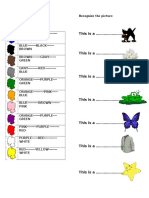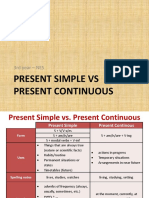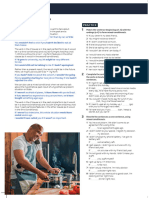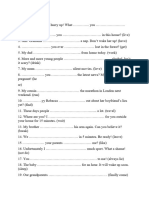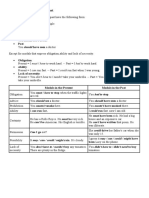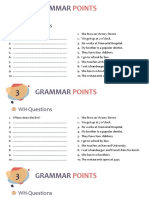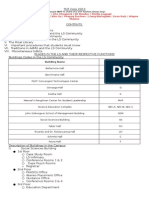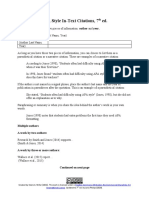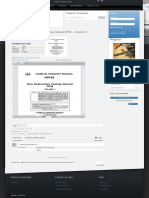TOPIC 3 – MUSIC & ARTS HOAN ENGLISH-0974 614 552
NAME:……………………………………CLASS:……………….DATE:………...................
--------------------------***--------------------------
TOPIC: MUSIC & ARTS
CHAPTER 2: ARTS
I. VOCABULARY: PHRASAL VERBS & IDIOMS
Exercise 1. Write one word in each gap so the second sentence has a similar meaning to the
first sentence.
1. You’ll have to improve your general knowledge before you go on that quiz show.
You’ll have to ................................. up your general knowledge before you go on that quiz show.
2. The car was so badly damaged it had to be destroyed.
The car was so badly damaged it had to be .................................... off.
3. One of the poems is particularly noteworthy due to its interesting use of imagery.
One of the poems is particularly ................................. out due to its interesting use of imagery.
4. If attendance doesn’t improve soon, the play will probably have to close.
If attendance doesn’t ................................. up soon, the play will probably have to close.
5. I’ve heard a new gallery has opened in St.Ives, so I’m going to see what it’s like.
I’ve heard a new gallery has opened in St.Ives, so I’m going to ........................ out what it’s like.
6. Susan only just passed her history of art course.
Susan ................................. through her history of art course
7. The photo’s got a couple of marks on it, so I’ll scan it and make it look better with some software
I’ve got.
The photo’s got a couple of marks on it, so I’ll scan it and .................. it up with some software
I’ve got.
8. On the show today, we’re going to completely change the look of the Simpsons’ square bedroom.
On the show today, we’re going to completely ........................... over the Simpsons’ square
bedroom.
Exercise 2. If a word is in the wrong sentence, write the correct word on the line. If it is
correct, put a tick.
1. The party was a bit boring to start with but everyone livened up when Rod got out his guitar.
...............
2. I’ve not very pleased with this drawing actually as I think I’ve papered up the perspective a
little. ...............
3. I’ve only wasted this up for now – I won’t be able to fix it properly until we get home. ...............
4. Julie and Simone have messed over their differences while they get their business set up, but
I’m sure they’ll start arguing pretty soon. ...............
5. Luckily, the weather brightened up in the afternoon so we were able to hold the reception
outside after all. ...............
1
�TOPIC 3 – MUSIC & ARTS HOAN ENGLISH-0974 614 552
6. The holiday at the health farm was awful. They only gave us a few vegetables every evening –
I almost smartened away! ...............
Exercise 3. Complete using the words in the box.
top minds word whistle par world line
heel sight fuel sore world under over
1. You’re a ........................ for sore eyes, Claire! Thank goodness you’re here – we desperately
need your input.
2. Jean Paul is clearly a very talented designer. His one Achilles’ ........................, however, may
be his lack of business sense.
3. The buffet at the party was out of this ........................! I’ve never tasted such exquisite
strawberries.
4. Amis’ new novel is slightly below ........................ for a writer of his stature; I was a little
disappointed.
5. I’m happy to simplify things for the readers, but I draw the ........................ at telling them blatant
untruths.
6. I think the media’s response has been a little over the ........................ - it’s only a TV programme,
after all.
7. Recent allegations in the press about price-fixing at the auction house have only added
..................... to the fire regarding speculation about Dotheby’s future.
8. I’ve spent the whole morning vacuuming the inside of the car. It’s now clean as a ........................
9. Soccer Maestro is undoubtedly the last ........................ in online football simulation games at
the moment.
10. They would be able to read the newspapers and make their own ........................ up about the
corruption and deception going on.
11. I do not know whether he would have been in a wet suit as well, but if so, the pair of us might
have been a sight for .............................. eyes.
12. He realized he'd gone .............................. the top with the seating arrangements.
13. California ranks ........................... par in tackling the retiree health-care issue.
14. After winning the batting title, Bagwell appeared to be on top of the ............................
II. READING
Museums of fine art and their public
The fact that people go to the Louvre museum in Paris to see the original painting Mona Lisa
when they can see a reproduction anywhere leads us to question some assumptions about the
role of museums of fine art in today’s world.
One of the most famous works of art in the world is Leonardo da Vinci’s Mona Lisa. Nearly
everyone who goes to see the original will already be familiar with it from reproductions, but they
accept that fine art is more rewardingly viewed in its original form.
2
�TOPIC 3 – MUSIC & ARTS HOAN ENGLISH-0974 614 552
However, if Mona Lisa was a famous novel, few people would bother to go to a museum to read
the writer’s actual manuscript rather than a printed reproduction. This might be explained by the
fact that the novel has evolved precisely because of technological developments that made it
possible to print out huge numbers of texts, whereas oil paintings have always been produced as
unique objects. In addition, it could be argued that the practice of interpreting or ‘reading’ each
medium follows different conventions. With novels, the reader attends mainly to the meaning of
words rather than the way they are printed on the page, whereas the ‘reader’ of a painting must
attend just as closely to the material form of marks and shapes in the picture as to any ideas they
may signify.
Yet it has always been possible to make very accurate facsimiles of pretty well any fine art work.
The seven surviving versions of Mona Lisa bear witness to the fact that in the 16th century, artists
seemed perfectly content to assign the reproduction of their creations to their workshop
apprentices as regular ‘bread and butter’ work. And today the task of reproducing pictures is
incomparably more simple and reliable, with reprographic techniques that allow the production of
high-quality prints made exactly to the original scale, with faithful colour values, and even with
duplication of the surface relief of the painting.
But despite an implicit recognition that the spread of good reproductions can be culturally
valuable, museums continue to promote the special status of original work. Unfortunately, this
seems to place severe limitations on the kind of experience offered to visitors.
One limitation is related to the way the museum presents its exhibits. As repositories of unique
historical objects, art museums are often called ‘treasure houses’. We are reminded of this even
before we view a collection by the presence of security guards, attendants, ropes and display cases
to keep us away from the exhibits. In many cases, the architectural style of the building further
reinforces that notion. In addition, a major collection like that of London’s National Gallery is
housed in numerous rooms, each with dozens of works, any one of which is likely to be worth
more than all the average visitor possesses. In a society that judges the personal status of the
individual so much by their material worth, it is, therefore, difficult not to be impressed by one’s
own relative ‘worthlessness’ in such an environment.
Furthermore, consideration of the ‘value’ of the original work in its treasure house setting
impresses upon the viewer that, since these works were originally produced, they have been
assigned a huge monetary value by some person or institution more powerful than themselves.
Evidently, nothing the viewer thinks about the work is going to alter that value, and so today’s
viewer is deterred from trying to extend that spontaneous, immediate, self-reliant kind of reading
which would originally have met the work.
3
�TOPIC 3 – MUSIC & ARTS HOAN ENGLISH-0974 614 552
The visitor may then be struck by the strangeness of seeing such diverse paintings, drawings and
sculptures brought together in an environment for which they were not originally created. This
‘displacement effect’ is further heightened by the sheer volume of exhibits. In the case of a major
collection, there are probably more works on display than we could realistically view in weeks or
even months.
This is particularly distressing because time seems to be a vital factor in the appreciation of all art
forms. A fundamental difference between paintings and other art forms is that there is no
prescribed time over which a painting is viewed. By contrast, the audience encourages an opera
or a play over a specific time, which is the duration of the performance. Similarly, novels and
poems are read in a prescribed temporal sequence, whereas a picture has no clear place at which
to start viewing, or at which to finish. Thus artworks themselves encourage us to view them
superficially, without appreciating the richness of detail and labour that is involved.
Consequently, the dominant critical approach becomes that of the art historian, a specialised
academic approach devoted to ‘discovering the meaning’ of art within the cultural context of its
time. This is in perfect harmony with the museum's function, since the approach is dedicated to
seeking out and conserving ‘authentic’, original, readings of the exhibits. Again, this seems to put
paid to that spontaneous, participators criticism which can be found in abundance in criticism of
classic works of literature, but is absent from most art history.
The displays of art museums serve as a warning of what critical practices can emerge when
spontaneous criticism is suppressed. The museum public, like any other audience, experience art
more rewardingly when given the confidence to express their views. If appropriate works of fine
art could be rendered permanently accessible to the public by means of high-fidelity
reproductions, as literature and music already are, the public may feel somewhat less in awe of
them. Unfortunately, that may be too much to ask from those who seek to maintain and control
the art establishment.
Questions 1-5
Complete the summary using the list of words, A-L, below.
Write the correct letter, A-L, in boxes 1-5 on your answer sheet.
The value attached to original works of art
People go to art museums because they accept the value of seeing an original work of art. But they
do not go to museums to read original manuscripts of novels, perhaps because the availability of
novels has depended on 1 .................... for so long, and also because with novels, the
2 .................... are the most important thing.
4
�TOPIC 3 – MUSIC & ARTS HOAN ENGLISH-0974 614 552
However, in historical times artists such as Leonardo were happy to instruct 3 .................... to
produce copies of their work and these days new methods of reproduction allow excellent
replication of surface relief features as well as colour and 4 .................... .
It is regrettable that museums still promote the superiority of original works of art, since this
may not be in the interests of the 5 .................... .
A. institution B. mass production C. mechanical processes
D. public E. paints F. artist
G. size H. underlying ideas I. basic technology
J. readers K. picture frames L. assistants
Questions 6-9
Choose the correct letter, A, B, C or D.
Write the correct letter in boxes 6-9 on your answer sheet.
6. The writer mentions London’s National Gallery to illustrate
A. the undesirable cost to a nation of maintaining a huge collection of art.
B. the conflict that may arise in society between financial and artistic values.
C. the negative effect a museum can have on visitors’ opinions of themselves.
D. the need to put individual well-being above large-scale artistic schemes.
7. The writer says that today, viewers may be unwilling to criticise a work because
A. they lack the knowledge needed to support an opinion.
B. they fear it may have financial implications.
C. they have no real concept of the work’s value.
D. they feel their personal reaction is of no significance.
8. According to the writer, the ‘displacement effect’ on the visitor is caused by
A. the variety of works on display and the way they are arranged.
B. the impossibility of viewing particular works of art over a long period.
C. the similar nature of the paintings and the lack of great works.
D. the inappropriate nature of the individual works selected for exhibition.
9. The writer says that unlike other forms of art, a painting does not
A. involve direct contact with an audience.
B. require a specific location for a performance.
C. need the involvement of other professionals.
E. have a specific beginning or end.
5
�TOPIC 3 – MUSIC & ARTS HOAN ENGLISH-0974 614 552
Questions 10-14
Do the following statements agree with the views of the writer in Reading Passage?
In boxes 10-14 on your answer sheet, write
YES if the statement agrees with the views of the writer
NO if the statement contradicts the views of the writer
NOT GIVEN if the is impossible to say what the writer thinks about this
10. Art history should focus on discovering the meaning of art using a range of media.
11. The approach of art historians conflicts with that of art museums.
12. People should be encouraged to give their opinions openly on works of art.
13. Reproductions of fine art should only be sold to the public if they are of high quality.
14. In the future, those with power are likely to encourage more people to enjoy art.
III. LISTENING
6
�TOPIC 3 – MUSIC & ARTS HOAN ENGLISH-0974 614 552
IV. SPEAKING
Prepare for your talk on Saturday: “The pros/cons of Art education”.



